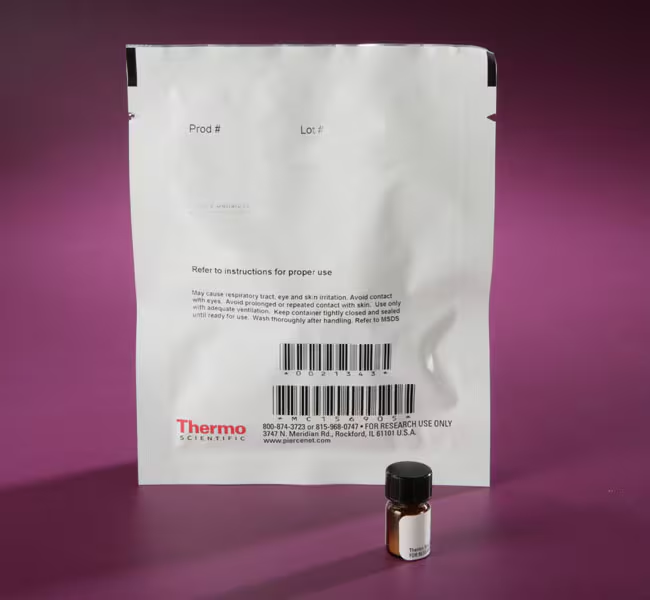
Thermo Scientific Pierce Iodination Beads are 3mm-diameter polystyrene beads that are coated with an oxidizing reagent, which provides efficient activation of iodine-125 for protein or peptide iodination procedures.
Features of Iodination Beads:
• Derivatized, uniform, nonporous polystyrene beads
• Remarkably reproducible iodinations
• Iodine-125 incorporation as high as 99%; labeled protein recovery > 90%
• Functions over a broad pH and temperature range
• Iodinates in the presence of azides, detergents, urea and high salt
• Allows efficient iodination of cell membrane surface proteins
• More gentle method for iodination than soluble chloramine-T because there is no contact between the protein and the immobilized oxidizing agent (Markwell, 1982)
• Fast and easy to use…iodinations complete in 2-15 minutes
• Reaction stopped by simply removing beads from reaction mixture with tweezers or pasteur pipet; no reducing agent necessary to terminate reaction
• More control over the incubation time
• Iodinate up to 500 μg of tyrosine-containing peptide or protein/bead
• Can be used to quantitatively iodinate histidine at pH 8.22
The coated iodination beads provide for convenient and efficient iodine-labeling without the hassles and damaging oxidative effects normally associated with chloramine T and other solution-based methods. One or two beads can be added per milliliter of protein solution and then easily removed following the labeling reaction, thereby completely removing the oxidizing reagent from the protein.
Iodination involves the introduction of radioactive iodine into certain amino acids (usually tyrosines) in proteins and peptides. Iodination takes place at the positions ortho to the hydroxyl group on tyrosine; mono- or di-substitution can occur. When iodinatable sites such as tyrosines are absent or of limited accessibility in a protein, iodinatable phenolic sites can be introduced by using the Bolton-Hunter Reagents (SHPP and Sulfo-SHPP). Certain crosslinkers also contain iodinatable tyrosyl groups in their spacer arms.
Radioactive 125-I or 131-I can be incorporated into proteins either by enzymatic or chemical oxidation. In the chemical oxidation method, sodium iodide is converted to its corresponding reactive iodine form, which then spontaneously incorporates into tyrosyl groups. While necessary for iodine activation, oxidizing reagents are potentially damaging to proteins. The solid-phase arrangement provided by the Iodination Beads (previously called IODO-BEADS) minimizes damaging effects.
| Code | Description |
|---|---|
| 28665 | Catalog Number: 28665 |

